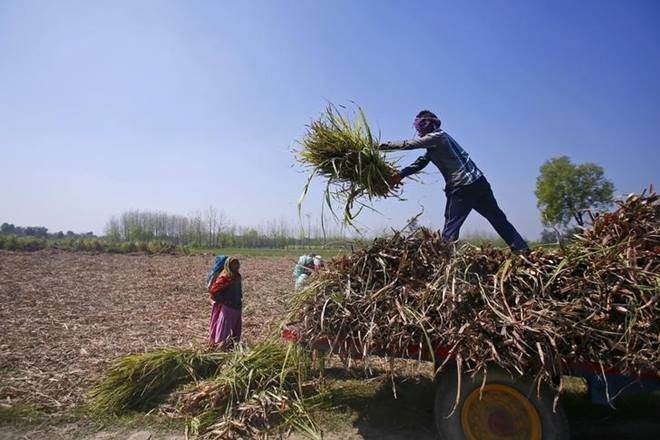While the government has reason to be pleased about the fact that the claims paid to farmers under the Pradhan Mantri Fasal Bima Yojana (PMFBY) have risen by around 50%, to Rs 15,181 crore in Kharif 2017 as compared to Rs 10,425 crore in Kharif 2016, what is worrying is the dip in both the number of farmers as well as land area covered by the scheme. More so since, in this scheme, farmers pay just around a fifth of the insurance costs while the Centre and the state governments pay the rest in equal amounts. Since, during this period, the premium paid rose to Rs 19,258 crore in Kharif 2017 as compared to Rs 16,276 crore, this means the claims ratio—claims as a share of the total premium paid—also rose quite significantly, to around 79% in Kharif 2017 versus 64% in Kharif 2016. And yet, the number of farmers covered fell to 3.5 crore in Kharif 2017 versus 4 crore in Kharif 2016, and the area covered dropped to 3.4 crore hectares from 3.8 crore hectares in the same period. Given the farmers pay so little of the premium and the fact that the claims ratio has risen as it has, it is not clear why the scheme is not attracting more farmers; the fall in the coverage is even more curious. One possibility is that the claims are being processed very late, so the farmers are less interested in taking up the scheme voluntarily.
The other, more likely, is that the insurance cover is still linked to the number of farmers taking loans from banks and, with more and more farm loan waivers, the number of farmers taking bank loans is falling. In Uttar Pradesh, which had large farm loan waivers, for instance, 2.5 million farmers were covered under PMFBY in Kharif 2017 versus 3.7 million in Kharif 2016; in Maharashtra, the number fell to 8.7 million from 11 million in the same period. Which is why, with Maharashtra asking for `7,000 crore in drought relief, Icrier professor Ashok Gulati argues that this should not be given since, had the state increased its PMFBY coverage, the crop loss would have been paid for by the insurance companies. Also, as he argues, central Maharashtra’s rainfall was just 9% below normal and it was 22% for Marathwada as compared to 24% in Gujarat—34% in Saurashtra— and 23% in Rajasthan. Surely these states should then get a larger compensation?
Equally important, as Gulati argues, is that, while the government is quick to announce large spending—under the Pradhan Mantri Krishi Sinchayee Yojana (PMKSY)—on irrigation projects, there is little monitoring of whether the costs are being artificially inflated or whether the project is even being executed well. In the case of Maharashtra, Gulati’s data shows, it cost Rs 13.5 lakh to create one acre of irrigation potential—from 2002-03 to 2013-14—as compared to `4.4 lakh in Gujarat. While different topography is clearly one reason for the difference, another could be artificial padding of costs; a detailed investigation is clearly called for. It gets worse when you consider that much of this irrigation potential is never used—44% in the case of Maharashtra and 49% in the case of Gujarat versus just 14% for Haryana and 7% for Punjab—since the canals that supply water to the farmers’ fields are usually not completed. Completing canals is not the Central government’s job, but in many states like Gujarat and Maharashtra, it is the BJP that is the ruling party in the state. Once you take this into account, costs of creating irrigation in Maharashtra rise to `20.4 lakh. If this `20 lakh per hectare were to be given to farmers as bonds—on which G-Sec rates of interest were paid—farmers would earn Rs 1.6 lakh per year without any risk, an amount that is significantly higher than what they make today. While none of this is to say the government shouldn’t spend on irrigation, the outcomes have to be carefully monitored and a cost-benefit analysis be done of all expenditures to supposedly boost farmer welfare.
Agriculture needs govt boost: Both PMFBY and PMKSY are flagging, revive them
While the government has reason to be pleased about the fact that the claims paid to farmers under the Pradhan Mantri Fasal Bima Yojana (PMFBY) have risen by around 50%, to Rs 15,181 crore in Kharif 2017 as compared to Rs 10,425 crore in Kharif 2016, what is worrying is the dip in both the number of farmers as well as land area covered by the scheme.
Written by The Financial Express

This article was first uploaded on November thirteen, twenty eighteen, at thirty-four minutes past two in the night.
